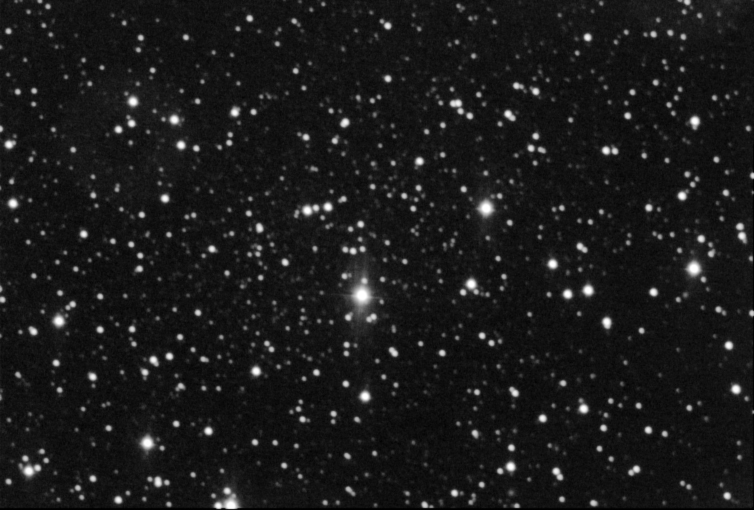
Combination of 10, 3 minute exposures
SBIG ST8XE CCD camera. 300mm f/6 newtonian telescope at prime focus.

The Carina Dwarf galaxy (PGC 19441) is a relatively close member of the Local Group, and is an excellent example of a dwarf elliptical galaxy, which are believed to be the most common type of galaxy in the universe.
The total magnitude is a bright 7.8, however the galaxy extremely difficult to observe due to its very low surface brightness. The galaxy is some 26' x 15' in size and located within the outer fringes of the Milky Way, about 4 degrees north-east of Canopus. The image above is centred on the galaxy, which almost completely fills the image. However there is only a slight trace of it visible! The galaxy can be seen as a slight enhancement of the faint star background surrounding the bright star near the middle. With a 17.5" telescope and very dark skies I have never managed a successful visual observation of this object! The problem is that the individual stars of the galaxy are very faint and very well scattered. On DDS images, the galaxy is visible as a slight increase in the overall star density. This faintness makes dwarf elliptical galaxies very difficult to detect outside of the Local Group. Therefore although they are the most common type of galaxy in the Local Group, they are almost unknown elsewhere.